Take a leaf out of these stunning pooja room designs to create an inviting and serene place of worship. To know more about the different traditional pooja room designs, check out our curated list.
A traditional pooja room in Indian homes is a space designated for prayer and meditation. When designed as per Vastu, this place of worship is recommended to be placed in the northeastern corner of a home. Driven by devotion, a pooja room should elegantly give out feelings of serenity and warmth. Not only that, traditional pooja room designs can be upped a notch from usual home decor accents to bring peace to both your mind and soul.
Whether you have a spacious duplex or a small apartment, a pooja room embodies deep-rooted tradition and values that are passed through generations. A place that is of such importance should have modern design elements along with traditional staples to capture a tranquil ambience. Here are some minimal to ultimate traditional pooja room designs that are perfect for any home.
South Indian Traditional Pooja Room Designs
South Indian traditional pooja room designs feature an elegant use of wood with detailed carvings and breathtaking brass idols. A separate room with heavy wooden doors and a decorative entrance frame set an impressive tone of the room that lies beyond. Inside, the wooden mandir frame set against the wall creates the perfect throne to place the idols. With idols and photos hung neatly in the pooja room, the space ensures easy maintenance of the area.
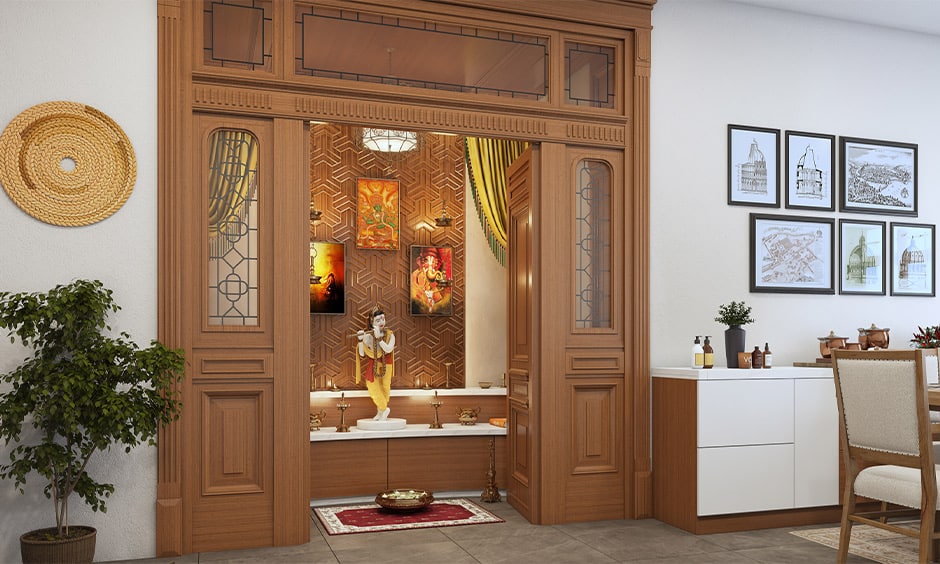
Traditional Pooja Room Designs With Beautiful Backdrop
Traditional pooja room decor is often interpreted as a space that reflects muted silhouettes. However, if you want to transform a simple traditional pooja room with a stunning backdrop, serene wallpapers are an excellent choice. Something exclusive like a false backdrop embossed with ‘Om’ exudes stately vibes. Complementing the marble deities and the white embossed wall behind is a solid brass bell hanging from the ceiling.
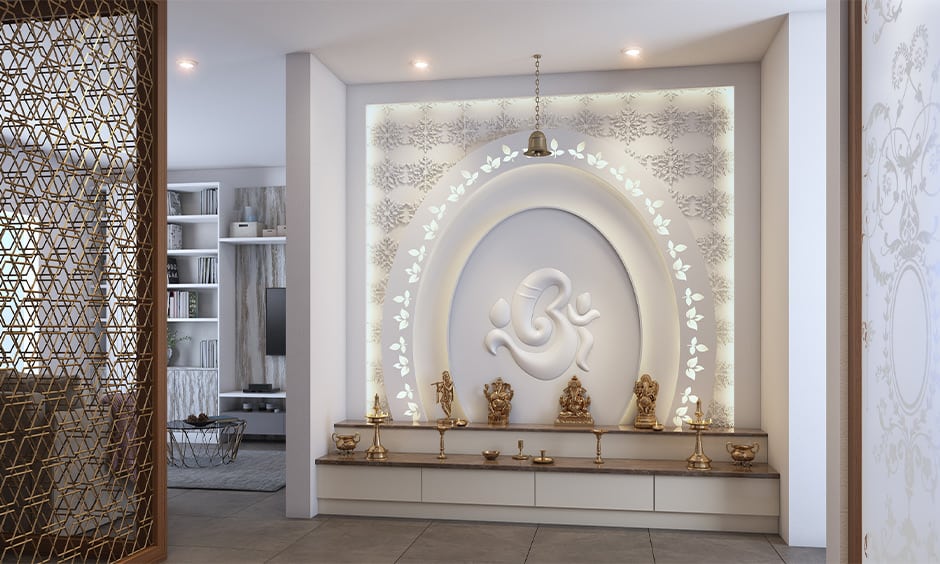
Luxury Pooja Room design
Traditional Pooja Room Designs With Accent Doors
Traditional pooja room designs feature a staple glass door to allow a glimpse into the mandir while retaining privacy. While glass doors are a great choice, a wooden traditional pooja room door has an eye-catching traditional charm. Making your spiritual zone look like a replica of a quaint temple in the village, intricate carvings on the door will make the entrance more distinguishable from the rest of the house.
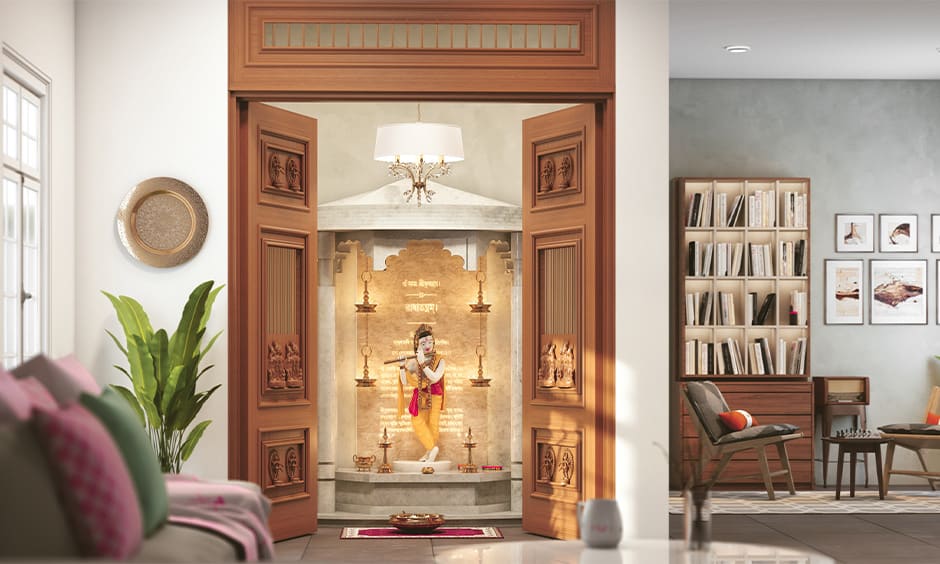
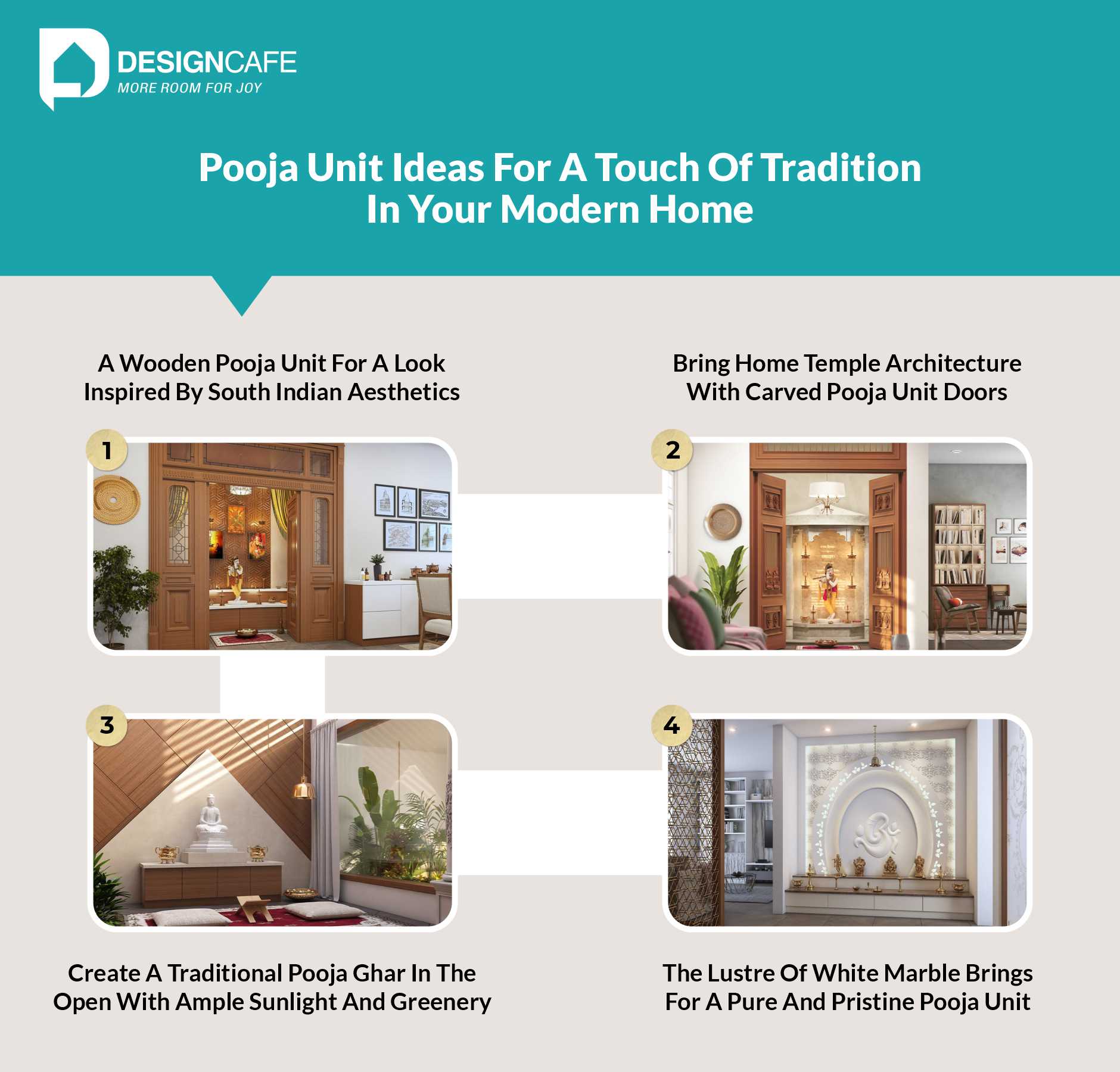
Custom Traditional Pooja Room Designs
Customising the frame of the shrine as per the space in the room ensures that you have ample area to comfortably sit when offering prayers. Compact yet tranquil, this traditional pooja room design features elegantly framed pictures of gods. With not enough space to place idols, a small pooja room with photos maintains a warm and inviting ambience in the area. Decorated with fresh flowers and silverware, the room reflects warmth from the overall ambient lighting pattern without being overcrowded.
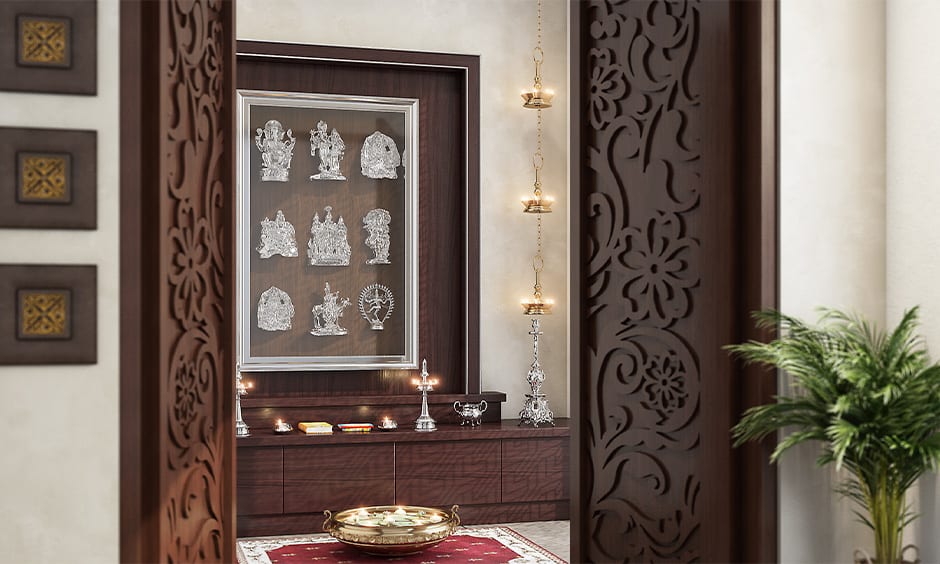
Paint A Picture
Not literally, but traditional pooja room designs paint a peaceful picture that reflects positivity and tranquillity in the home. A mandir area near a waterbody in the house has a soothing vibe to it. Designed with a French-style open window to let natural light in, this design is both clean and minimal but with an impact. Featuring a single idol with devotional words inscribed from the Bhagavad Gita, the pooja room casts a meditative spell over the devotees.
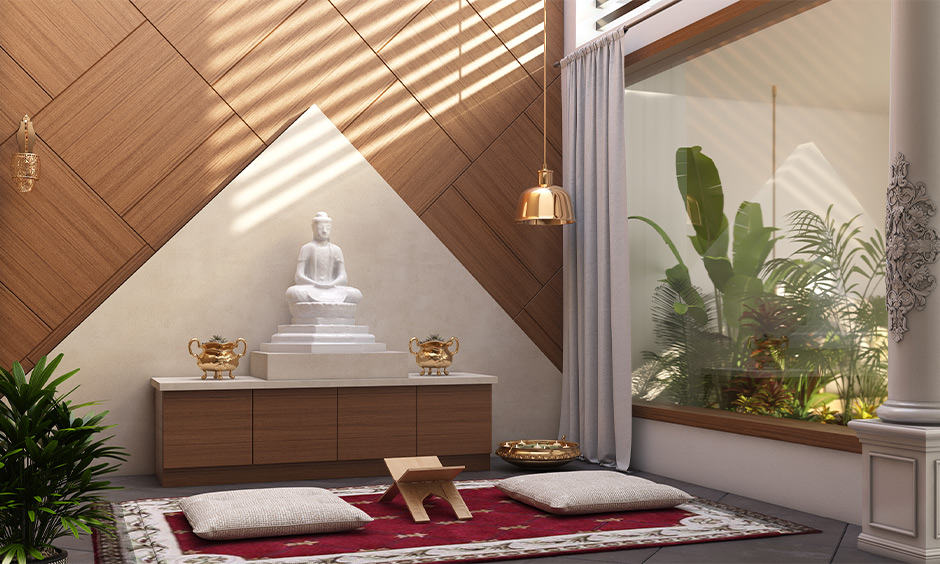
The true beauty of a traditional pooja room design lies in the small details. A room with no distractions, the space has a vibe that is almost zen-like. Warm and welcoming, your pooja room can be as clean and minimal or bright and lively as you would like it to be. So, whatever you choose, we at DesignCafe will also be happy to help you with more inspirational designs for your home. And if you have an idea, we’ve got the tools. Get in touch with us today for the perfect traditional pooja room designs and let your dreams take wings. Found an idea you particularly like? Tell us in the comments below!
FAQs On Traditional Pooja Room Design
How can I organize my traditional pooja room to maximize efficiency and convenience?
Add cabinets in the pooja room to store all pooja essentials and maximize efficiency. Alternatively, you can use organizers such as trays and baskets to keep the items in your pooja room organized. This will help you keep necessary pooja items such as lamps, incense, and holy books within easy reach. Keep the pooja room clean, clutter-free and well-ventilated at all times to make the space easier to use.
What are some ways to decorate a traditional pooja room without sacrificing its traditional character?
You can decorate a traditional pooja room with modern lighting fixtures to create a warm and inviting ambience without sacrificing its traditional character. Hang traditional Indian artwork such as paintings, sculptures, and carvings on the walls and illuminate them with task lights. You can also incorporate decor items like tall brass lamps or bells suspended from the ceiling.
What materials are commonly used in traditional pooja room designs?
Wood is the most commonly used material in traditional pooja room designs. It is used for creating pooja room doors, shelves, and cabinets. Marble is another commonly used material used for flooring and walls in the pooja room. For pooja room accessories such as lamps, bells, and plates – brass and copper are popular traditional materials.
What kind of lighting is suitable for a traditional pooja room?
For a traditional pooja room, diyas and candles are the most popular choice. Use spotlights to highlight the idols and framed pictures of gods. Additionally, you can add LED lights for a warm and inviting glow. String lights can be used to create a festive atmosphere in the pooja room during special occasions and festivals.
Are there any particular symbols or motifs that are commonly used in traditional pooja room designs?
Om and Swastik are the most commonly used symbols in traditional Indian pooja room designs. These symbols bring positivity and spiritual energy into the space. The Lotus motif is also popular as it is a symbol of purity and enlightenment in Hinduism. Kalash and diya (oil lamp) motifs are also in pooja room designs.
If you enjoyed reading about traditional pooja room designs, also explore Innovative Pooja Room design.
 Select Category
Select Category



















